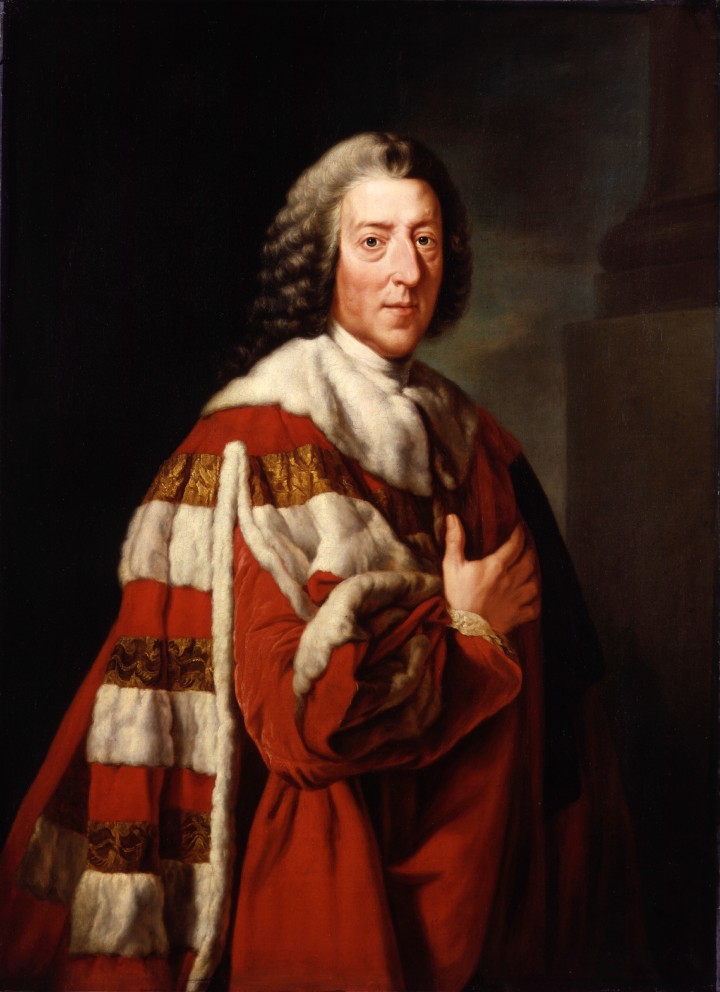
**This research was first published in the April 30, 2025 edition of the Chatham Star-Tribune newspaper as part of Kyle Griffith’s weekly segment entitled “Heritage Highlights.”
William Pitt the Elder depicted in 1772
When Pittsylvania was formed in 1767, founders conjured up potential names for the new county. Adjacent counties sourced their names from British Lords, colonial Governors, and the Royal Family. Following suit, Pittsylvania took its name from William Pitt, 1st Earl of Chatham, who was born in 1708 and died in 1778. Despite never visiting America, “Pitt the Elder” is the namesake for several locations throughout the country. He and his extended family held a grand influence in Britain, but it makes one wonder why Virginians would want to identify with him.
Before delving into William Pitt’s history, his grandfather Thomas Pitt (born 1653) established the family’s wealth while formulating trades in India during the late 1600s. With the profits he purchased a manor and surrounding borough called Old Sarum which enabled him to elect himself as a representative to Parliament. There he laid the foundation for his son Robert Pitt to retain control of the borough. Thomas returned to India in 1698 where he served as president of Fort St. George, and of the East India Company, but returned in 1717 and purchased another manor house in Cornwall, England called Boconnoc that remained in the family. His son Robert Pitt married a noblewoman named Lady Harriet Villiers, whose mother came from Irish nobility and together they raised a sizable family. The first child, Thomas, was the main heir of Old Sarum and Boconnoc Estate, followed by a second son William (the Elder). They also had a handful of daughters with few records associated with their lives. Robert’s life ended after a brief forty-seven years, having served in the administration of Old Sarum between 1705 and the 1720s, and left all his large holdings to his two sons in 1727.
William “Pitt The Elder” as historians call him attended Trinity College at Oxford, but was not able to finish his degree due to a crippling case of the gout (which afflicted him throughout his life). However, he continued his studies in law at Utrecht University–in what is now the Netherlands–and then returned to his brother’s manor at Boconnoc. Pitt the Elder also served as a Member of Parliament for Old Sarum in 1735 and became entwined with a party known as the Patriot Whigs. Across the ocean, towards the end of the Golden Age of Piracy, Great Britain waged a colonial war against Spain in the Caribbean. Pitt gained attention for his influential speaking skills and held several esteemed titles while territorial conflicts between the French led to the start of the Seven Years’ War (or the French and Indian War) in the 1750s. Pitt became Secretary of State in 1757 and poured money and military resources into the American colonies to retain lands along the border with Canada. Under his term, colonial troops captured the French sites of Louisbourg, Quebec, and Fort Duquesne–the last of which was renamed Pittsburgh (Pennsylvania) in honor of William Pitt. He also later served as the namesake of Pitt County, and Chatham County in N.C., the HMS Pitt (1816), Chatham Square in NYC, and Chatham Manor in Fredericksburg, Virginia to name a few.
In 1761 Pitt resigned and remained inactive for a few years until he accepted the position of Prime Minister in 1766. As America leaned into independence from England, Pitt opposed harsh taxes on the colonies and tried to preserve peace between France and Spain. With this appointment he was also granted the noble title of “1st Earl of Chatham.” The said Chatham was a town in Kent, England that served as a military dockyard at the time, but Pitt did not live there. The status of earl ranks high on the scale of nobility, just under the king, prince, duke, and marquess. There is no feminine equivalent of the word earl, unlike the titles for queen, princess, duchess, etc., so his wife Hester held the title of Countess of Chatham. The title of earl is equivalent to a count, which is also where the term county is derived. From the perspective of a Virginian, at the peak of his popularity in 1767, William Pitt was a perfect source for the name of a new county.

